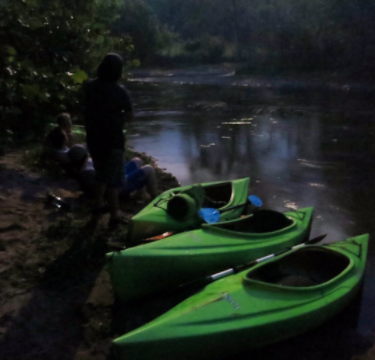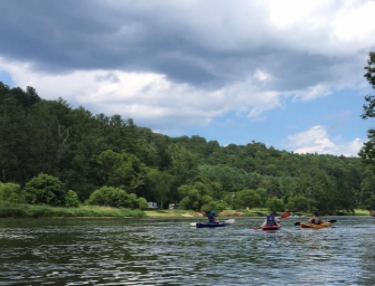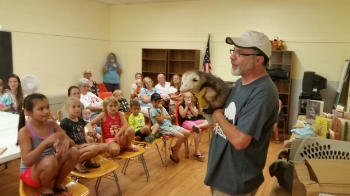

Creature Feature: Spicebush Swallowtail
A stand of Spicebush along the creek results in an abundance of Spicebush Swallowtails Papilio troilus flying low and fluttering their wings while they feast on summer's abundant flowers.

Deciphering Nature's Signs
So much is happening in nature and in our human constructed world that we tend to ignore some of the most obvious events of the natural world. Plus there are literally thousands of sights and sounds vying for our attention and it takes a significant effort of will to focus and be observant. A certain training of the mind helps in watching even subconsciously for important clues and selecting them from the background "noise."

New River Expedition- Summer Fun!
There is no grander journey than pushing off from shore in a boat on a one-way trip to wherever the current carries you! On July 14, intrepid explorers from throughout the region did just that. Launching our kayaks and canoes from the King's Creek access along the South Fork of the New River, we began a four day journey down the currents of the New. With the guides paddling the canoes full of gear, the kids were free to explore the river at their own pace.

Blue Ridge Explorers Club on the New
Stormy weather turned the July Blue Ridge Explorers Club "Full Moon Float" into a "Sunny Day Float" on a different section of river.

Pollinator Fields in Their Glory
In general I do not recommend trying to improve on nature beyond the boundaries of the yard since the beauty of natural scenes is often incomparable. However creation of a Pollinator Field from a portion of hay fields or pastures or even yards can provide habitat for pollinators such as butterflies and bees, while also providing enjoyment to the land owner.

Mammals Program @ the Grayson County Library
Darin Handy recently joined BRDC for an event held at the Grayson County Library. His amazing mammals program captivated an audience of 50 people from infant to 80 and over.